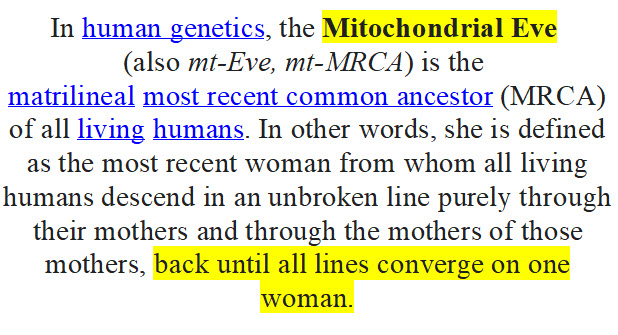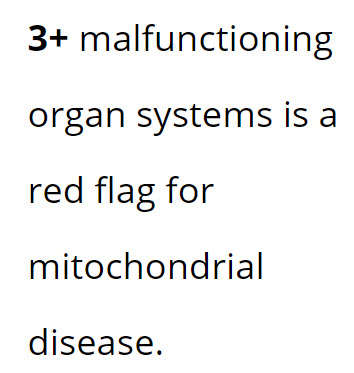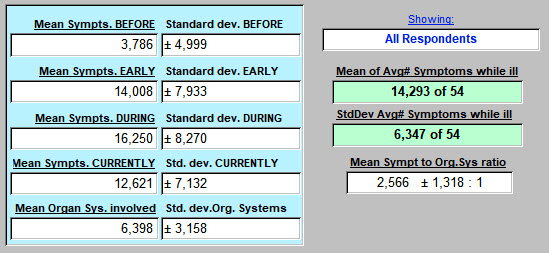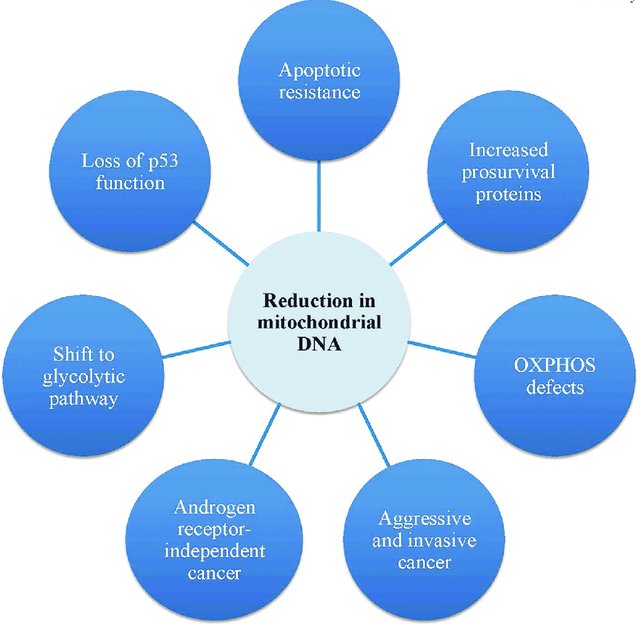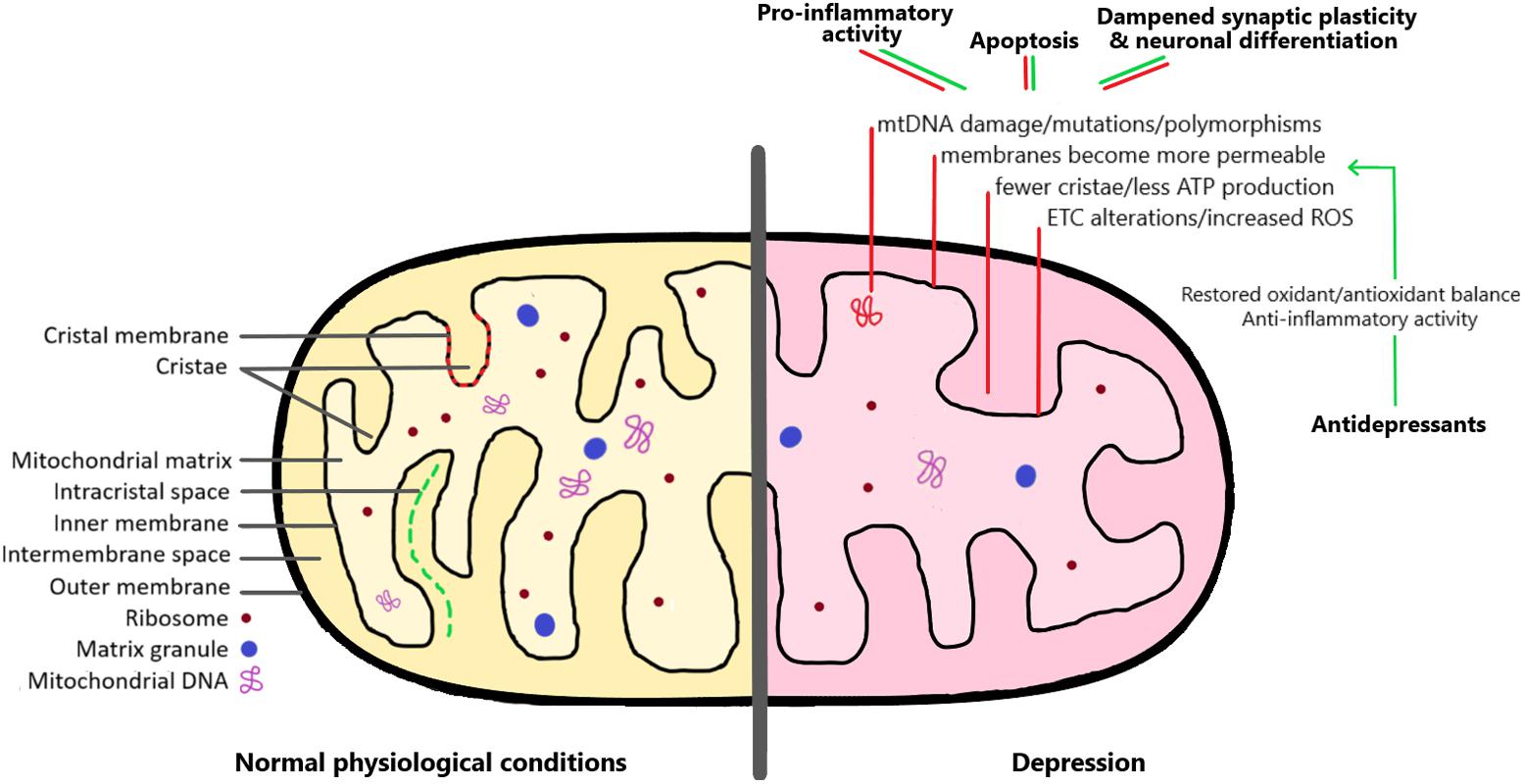Mitochondria
Mitochondria & COVID-19 : Is the Force with you ?
LTCOVID.com
Thanks for visiting!
To translate this page, select your
language from the dropdown menu below:
Here's an interesting observation. In what follows, the information is 95 to 99% factually correct Medically and Scientifically. For the missing details, I suggest not worrying about them.
If you want to worry about the small percentages, go ask Google.
-----------
ATP is of course the abbreviation for Adenosine Tri-Phosphate.
Everything that you eat is converted by your body into only a single energy source: ATP.
If you object that glucose, and fats, and some proteins too are converted into energy, that's a start.
But they are ultimately converted into the only energy currency your cells will accept: ATP.
--------
If you buy a 30 mg vial of ATP at Sigma-Aldrich chemical company, do you know what it costs?
Ans. : 77 €uros. So that is their price for 0.03 grams. 1 gram would cost 2 567 €uros.
Prefer US $'s? That's 3 061$US at today's exchange rate. For 1 gram.
And Sigma-Aldrich will send it right out to you today.
--------
At that price, what would you have to pay for all the ATP that your body will make and turn over in the next 24 hours?
In 24 hours, approximately 60 Kg of ATP is turned over in a healthy adult person.
"Turn over" means the conversion of ADP and inorganic phosphate into ATP, then when that phosphate gets released for cellular energy and use, ADP goes back to the mitochondria and it starts all over again.
So? How much?
Ans. : 1. 4 million $US. (If you prefer to buy that in €uros : 1,173,643.93€.
In either currency, Sigma-Aldrich will delivery it personally to your door in the next 8 hours if you decide instead to buy it from them.
You may be thinking: "Gee, any way I can sell off some of what my body makes in a day? I'm a little strapped for cash during this pandemic thing."
---------
But the real point is: have you remembered to be grateful today, for all that your body miraculously does?
Eat what you want. But unless it's nails, your body will convert that into our energy charged molecule: ATP. The nails might serve as a source of iron, but Don't Eat Nails!
So who's doing all the work?
Your mitochondria: In all of your metabolically active cells. In all your cells with nuclei.
So take a moment now, to thank your mitochondria.
---------
"I know all about mitochondria, am grateful for their good work, but what's next?"
"Are we talking 'long-term' COVID-19 here, or cellular biology?"
Right answer: Yes, we are.
But if you'd like to learn more about these amazing organelles in your cells, making it possible in fact for you to read this right now, ...
Here are some videos that should get across the key points, the key ATP links and components in the process, better than I can. Unless I took about 1.4 million pages to accomplish that.
----------
Take me to the mitochondria >>>>
Direct to the related bibliography: Last article added, published 21 June, 2024 >>>>
"I'll risk missing out. Let's skip to what's next." >>>>
(You're making a big mistake).
-----------
<<<<<< Home
Mitochondria : Amazing, and simply Amazing !
LTCOVID.com
Thanks for visiting!
To translate this page, select your
language from the dropdown menu below:
Some videos below will show you what I mean when I say "Amazing !"
If we have them in the right order you'll see.
- Human cells represented, and showing where mitochondria spend their days.
- How mitochondria make ATP. An amazing enzyme called ATPase. I said "enzyme" because that "-zyme" termination was always the way enzymes were taught in Biochemistry class. But actually, and as you'll see, ATPase is a wonderful machine, a turbine, that cranks out ATP. That is, as long as you give it what it needs to do the work. Its made of multiple protein subunits that work in perfect harmony through each turn of the wheel. Multiple mini-mchines working together.
- And "what it needs" are protons, call them hydrogen ions or H+ if you like, but protons to drive the turbines wheel.
- Now where the heck are you going to find a mess of protons when you need one? Well, in the electron transport chain.
- Electron Transport Chain - explaining that in this paragraph will turn into 4 pages at least. Watch the movie.
- Say, who though of all these "mini-machines"? I mean, who had the plan? Ans.: it's encoded in each mitochondrions DNA. A small circular ring of DNA that codes for all of these machines made of protein.
- Are their just one or two of these turbines and transport chains and all the rest? Ans.: No. Gillions of them throughout the human body. Making sure the ights stay on and that they never go out. Well, not until ... the game is over.
- And two optional explanations from professors who swim in this each day.
Let's have a look:
But first, a warning. You'll be looking at more things that look like this Intro below.
Events going on inside of you. Right now.
Not for the faint of pancreas.
Mitochondria - Structure & Function
Tracks from outside cells to quickly enter into mitochondria territory.
Next ...
ATPase
The Structure and Function of ATPase (the turbine): literally turns ADP + Phosphate, into ATP. It's driven by protons or hydrogen ions that make the turbine turn. It's happening in your cells now.
A link to the above video:
Wonderful. But where do those protons come from?
Next part of the explanation: the Electron Transport Chain is coming up.
Gradients
But first, as with so many things in the body, things happen, movement continues because there is a gradient. A zone of high concentration of something, and a zone of low concentration. Here: protons. And there needs to be a a barrier between the two zones. If not they flow and mix, and that's not a gradient. The separators are membranes. Phospholipid bilayers (don't worry anout that) as seen in the grey bar above from the previous video. Stay with me.
The Electron Transport Chain
Just one thing to mention before you go with this.
NOTICE: Towards the end, a transporter named 'Cytochrome c'. It carries electrons to the E.T.C. Complex 4 (explained in the video). We'll come back to that in subsequent articles.
It passes through quickly here. It is very important to where we are headed. Just remember the name: 'Cyrochrome c'.
Are we still heading towards "long-term" COVID-19 in all of this? Absolutely.
And just to help with the fit of all these non-imaginary little machines with our day-to-day; We breathe oxygen because it is the final electron acceptor at the end of the Electron Transport Chain.
Did I just give something away?
Next, ...
The Catalytic Subunits
If taking things apart to see how they work pleases you, here's a great explanation of how those areas that put together the ATP, do this like a well choreographed dance. Amazing. Every 120 degrees of turn of the central axis, something different happens. Over, and over again.
Or maybe not just yet ...
I'm sure the possibility exists of feeling quite blown away by all of this.
So, who could put mitochondrial activity in perspective for us?
Who has the experience, the professorial knowledge, but especially the deep love of this subject matter?
You don't have to do these all right now. Better to let some of this sink in and come back to these from time to time.
Are these too complicated for the non-initiated?
Perhaps. But it's how professionals talk. They're so into it, that they can't do otherwise.
You can't teach an old dog new tricks. Even if the speakers here are not that old, they are each day embedded in their stuff. And it shows. Just retain what you can.
Listen especially and note: where this field had been, and where it seems headed.
On subsequent pages, we'll place articles in PDF to help make this all complete.
Especially for those who actually already know a lot about mitochondria. They're welcome too.
I would elect ...
Jodi Nunnari
The above video is at: https://youtu.be/WEECyKKgNo0
Want a slightly different style? Perhaps ...
Jared Rutter
He'll be telling you about:
- mitochondrial origins
- structure
- mitochondria and metabolism
- protein homeostasis
- communication between mitochondria and between mitochondria and other cell organelles
A link to the above: https://youtu.be/vnw76pfiteQ
And here is his follow-up presentation, if your brain cells still have enough ATP available ...
A link to the above: https://youtu.be/b0pDBPJiNnc
"Can We Bring This All Together Now ?"
- This information is all pretty amazing.
- The superb animations were made possible how? Did we have these 40 years ago?
- No. We had Biochemistry.
- But since then multiple fields have pulled together on this: Biology, Cellular Biology, Molecular Biology, Genetics, and Medical Illustration that have now gone far beyond Frank Netter (look him up). And never too far away, inputs still from Biochemitry, Organic Chemistry, Physics and even Mathematics. When someone comes up with a blockbuster, others notice and try to make the parts fit with what their field knows and can add. Moving now at light speed.
- We get a sense of how much has been learned.
- We get a sense that this has opened the door on a field where probably most remains unknown.
- Saying that mitochondria are "the powerhouse of the cell," while correct, pales before the myriad functions that mitochondria are carrying out. In Immunology for instance. And in Sickness & In Health.
- So should we just stop and wait for more amazing results? Absolutely not. No time for that.
- But it all stays in the Scientific Method. Gently setting aside the old theories that have served so well, to be replaced cautiously, by the new.
"Ok. Nice. Very neat. Amazing.
But is there a link here to "long-term" COVID-19, or not?
ANS. : Yes, there is a link.
Mitochondria : Get sick sometimes
LTCOVID.com
Thanks for visiting!
To translate this page, select your
language from the dropdown menu below:
And a sick mitochondrion usually, is not a very good thing.
There is even a mitochondrial police force. Constantly on patrol for mitochondria that
aren't feeling well, behaving erraticaly, gotten flimsy, can't maintain their proton geadients, gotten old.
And these valiant old and sick mitochondria are rounded up, isolated in a bubble called a lysosome (there are other bubbles, but 'lysosome' gets the point across), and there they are destroyed.
Unmercifully.
Lysosomes don't mess around very long. The blade drops. They destroy.
And because the human body is wonderful, the bits and pieces of the now broken up mitochondria that are no longer suffering ill health, are recycled to provide substrate, building blocks, to make new ones.
That's life.
You need ATP. Me too.
So if the machine that makes it gets all feblunget (Yiddish for really confused and a mess), watch out.
In some ways it is fortunate, even if sad, but a fetus with significant errors in the mitochondrial DNA of its still forming cells, will probably not survive to birth. It inherited that mitochondrial DNA from Mom only. None from Dad (200 mito's in the midportion of the sperm's tail, but it doesn't enter the oocyte). We won't blame Mom for the result. In spite of her single fertilized ovum having about 20 000 mito's, some that were donated to form the fetus weren't quite right. The mitochondrai know that: "This will never do !" And it's been going on like that from Mom, back to GrandMa, and yes, to Great GrandMa and before. All the way back to "Mitochondrial Eve." Really? Yes. Google her.
And those with mitochondrial DNA errors that do survive intrauterine development and are born, frequently have a whole list of major problems. Many do not live beyond 2 years of age.
---------
This should not be a stopping point. It simply underlines the primal importance of our mitochondria.
Here are some more sources of information about these unfortunate (though fortunately uncommon: 1 per 10 000 births for example) illnesses.
Now we'll move on. Back to "long-term" COVID-19.
Is "long-term" COVID-19 a mitochondrial disease?
We think so. The coronavirus is sure of what it did, on purpose, but it doesn't care.
It is hyperfocused on everything required to use our mitochondria for the virus's high-energy requiring making of baby viruses. SARS-CoV-2 doesn't carry its own energy source. We're it.
Is there anyone else out there, a bit more human perhaps than a virus who isn't at all human of course, who thinks so? Who thinks that SARS-CoV-2 just clobbers our mitochondria. Hijacks them. Can't wait to do so ???
Yes.
So, ...
"More info on mitochondrial diseases please." >>>>>
"I'm willing to accept that sick mitochindria are a problem.
Let's see those links of mitochondria to "long-term" COVID-19." >>>>>
Mitochondrial diseases : a big problem. A real problem.
LTCOVID.com
Thanks for visiting!
To translate this page, select your
language from the dropdown menu below:
A problem too big to discuss in depth here, but here is a link that summarizes mitochondrial disease quite completely. Scientifically complete as well.
And of course, there are support groups, and pitched at families of those involved.
Such as the United Mitochondial Disease Foundation.
Here are the supported mitochondrial diseases at UMDF? Quite a list.
Here, their more in depth summary of these mitochondrial conditions.
And on the page linked to above, this caught our attention ...
The respondents to our questionnaire on "long-term" COVID-19 had on average, 6.4±3 organ systems involved. Some will argue that this was subjectively determined, and not by physical exam or tests.
We think it's worth noticing.
Here is another support group: MitoAction
And here, their list of mitochondrail diseases.
So yes, this field of Medicien is a challenge. And especially for the patients affected and their families.
Research is of course ongoing.
> Here is a review of current therapies and those on the horizon for mitochondrial diseases.
Emerging therapies for mitochondrial disorders
----------
Back On Course, or Not Yet ?
You will notice that subsequent articles here have a format change, presenting more and more references to supportive articles. Articles from the famously respected "peer reviewed" literature.
Why this evolution ?
Because we will soon wade into unusual waters.
"Unusaul" in the sense that day-to-day Medicine, and the problems patients present to it, and especially the commonly practiced therapeutic interventions, is not where we are headed.
And very soon as we proceed here, we will be in deep uncharted waters.
Some will read and follow here and imagine us bobbing up and down out in the surf.
Many will conclude: "Sorry, just can't believe in your hypothesis."
But the "peer reviewed" sources to build an argument are present and available. We'll collect these for you in a bibliography each time we suggest something. Some articles will be right on target. Others will simply be throught provoking.
It's a bit strong to suggest that a novel virus and its illness, may need a novel therapy. Not just variations: steroids or no? hydroxycholoquine or no? transfusing recovered donor serum or no?
But something that, like so many innovations, has ben around but had not yet made that really big impact.
Now, that may change.
-----------
So Here, Some References to the Prior Art
Just to get used to this.
I will offer very few words to explain these as they are placed. We have to move on now.
Mitochondria - in sickness and in health
No better place to start than with Jodi Nunnari.
And since for many, this will be a list towards the increasingly incomprehensible, we'll place others from the "peer reviewed" literature on a separate page. They are selected for inclusion, because they are stepping stones to where we are headed. Think of them as a selected bibliography.
Sometimes when we seem to be getting "there," it's nice to be able to turn, look back, and ask; "How did we get here?"
Let's see the Selected Bibliography >>>>>>>
Instead, just take me to
the next critical point in this journey of discovery >>>>>>
Selected Bibliography : Mitochondrial topics - background to "long-term" COVID-19
LTCOVID.com
Thanks for visiting!
To translate this page, select your
language from the dropdown menu below:
Think of them as stepping stones towards our goal.
Think of them as doors opening on new perspectives.
We are again underlinong here the importance of mitochondria if you still had any doubts.
We are also bringing in a host of other topics. You may not have thought of mitochondria first, when these topics were presented in the past. Now you should.
Like the books in any library, just enough references here to come back to from time to time, and thereby avoiding 'overwhelm'.
You are permitted to recall our Questionnaire's results as you scan through these references.
If you need help with recalling these responses: Energetics.
--------
> Damage to mitochondrial DNA (its DNA) happens with aging. You might have guessed that.
Decline in skeletal muscle mitochondrial function
> Maternal ancestry and racial origins show differences in mitochondrial damage in blood vessel cells.
Endothelial Cell Bioenergetics and Mitochondrial DNA
> How mitochondrial functions impinge on health a disease. How will that fit into future therapies?
Mitochondria - in sickness and in health
> Mitochondria, Hydrogen peroxde (H2O2), creation & control, and use in communicating energy levels to points outsiude of the cell.
Mitochondria can act as energy-sensing regulators of hydrogen peroxide availability
> Mitochondrial energetics, and a reply to a Comment.
Mitochondria, complexity, and evolutionary deficit spending
> Mitochondrial function varies from one tissue to the next. Here adipocytes (fat cells), and a view of obesity as a probable mitochondrial disease.
Mitochondrial (Dys)function in Adipocyte (De)differentiation and Systemic Metabolic Alterations
> A related and critical observation on mitochondria and fat cells. Recall the fat gain is frequently seen in "long-term" COVID-19 patients. Adipocytes (fat cells) are behaving quite unexpectedly. We have other articles on this, but here's a part of that puzzle.
Mitochondrial Complex III ROS Regulate Adipocyte Differentiation
> While our principle topic is not cancer, here is a study showing differences in racial groups' incidence of prostate cancer, as clearly linked to racial differences in populations of mitochondria. Again, as we always try to work our way back to the "long-term" COVID-19 population and the sample that we studied, racial differences there fit very nicely with this study.
Mitochondrial dysfunction and prostate cancer racial disparities among American men
The article summarizes these findings with this graphic, bringing many findings together.
Undesired changes and overall reduction in mitochondrial DNA leads to disease.
> Substrates fro mitochondrial work, what we feed them essentially, will create markedly different outputs of reactive oxygen species (consider these bad, but that's simplified). But signaling functions from mitochondria can be greatly influenced by substrate differences.
Sites of reactive oxygen species generation by mitochondria oxidizing different substrates
> The DNA of mitochondria, their genome, as with other chromosomes and genes of the nucleus, are susceptible to damage. Repair is essential if normal function is to continue. Some repair happens through communication with outside cellular organelles charged with repair. Some repair is internal to the mitochondrion. This article emphasizes its essential role. Illnesses that affect repair mechanisms, have serious censequences.
Mitochondrial Genome Maintenance: Damage and Repair Pathways
Mitochondria & GENDER Differences
> Here we start with the basics: mice. But the results are still interesting as one begins to think about mitochondrial gender differences. "Here, we examine if sex disparity in mitochondria
function, morphology, and redox status starts early and hence can be implicated in sexual dimorphism in cardiac as well as neurological disorders prevalent at young age. Although mitochondrial activity in the heart did not significantly vary between sexes, female brain exhibited enhanced respiration
and higher reserve capacity."
Sex‐specific differences in mitochondria biogenesis, morphology, respiratory function
> Still with the mice. Still intresting. "These findings suggest that the major male/female differences in brain pregnenolone and PROG levels may contribute to the sex differences observed in brain mitochondrial function."
> Ah ... Humans? No, not yet. Still mice. Paraoxanase 2 differences in male and female brains.
"These results suggest that PON2 is a novel major intracellular factor that protects
CNS cells against oxidative stress, and confers gender-dependent susceptibility to such stress. The
lower expression of PON2 in males may have broad ramifications for susceptibility to diseases
involving oxidative stress, including neurodegenerative diseases." Recall that Parkinson's disease in humans, is almost exclusively a male disease. So this is an example of how basic research is pushing our understanding of mitochondria and their many fundtions besides ATP creation, far ahead at almost the speed of light.
GENDER DIFFERENCES IN BRAIN SUSCEPTIBILITY TO Oxidative stress
> Humans? Nope. Mice. Males have impaired cardiac energy function and signaling events. Sound like a problem related to outcomes for men in an ICU setting? (Humans in ICU, not mice). Yes, potentially.
Obesity, diabetes, cardiovascular function. We found at least 2 of those in our questionnaire responses.
Sex Differences in Cardiac Mitochondria in the New Zealand Obese Mouse
> Ah, humans. Gotta love 'em.
Our questionnaire confirmed that those with "long-term" COVID-19 who present with this disease, were just over 90% female. And in that sample, a gender comparison revealed some important diferences in how the illness manifests. In this article below, we find anew, differences related to mitochondria. These are not just in one organ or tissue. Here, both blood cells and brain show gender-specific differences.
> Differences in mitochondrial respiration parameters in men and women (humans). Superios intrinsic mitochondrial respiration in women. (Again, think of men having respiratory difficulties in an ICU setting).
"These findings may represent an adaptation in the oxygen cascade in women to optimize muscle oxygen uptake to compensate for a lower oxygen delivery during exercise."
Superior Intrinsic Mitochondrial Respiration in Women Than in Men
> Human : The one you've been looking for. Excellent work.
"It appears that mitochondria are the place of marked sexual dimorphism involving mainly oxidative capacities, calcium handling, and resistance to oxidative stress. In turn, sex hormones regulate mitochondrial function and biogenesis. ... Sex differences in the occurrence, development, and outcome of pathologies become more and more obvious. Yet, the consideration of sex differences in clinical and experimental research is still poorly acknowledged. Pathologies with a better prognosis in women involve protective effects of estrogens and mitochondria. Pathologies with a female disadvantage like autoimmune disorders seem to be less dependent on mitochondrial dysfunction as a primary factor. "
Mitochondria - a central target for sex differences in pathologies
Comment: Given all of the above findings pertaining to gender diferences and mitochondrial function, there is every reason to believe that the findings that emerge from responses to the questionnaire, and related specifically to energetics, fit right in to the topic headlined here.
Mitochondria & Mental Health
> What happens when mitochondria are placed under stress?
Mitochondria May Hold Keys to Anxiety and Mental Health
> An introduction to "mitochondrial allostatic load" (MAL) - maladaptive mitochondrial adjustments to stress do occur.
Psychological Stress and Mitochondria - A Systematic Review
> Psychologic stress induces structural and functional recalibration of mitochondria - a role in psychosomatic illnesses due to MAL.
Psychological Stress and Mitochondria - A Conceptual Framework
> Mitochondrial psychobiology: an emerging field
Mitochondrial psychobiology - foundations and applications
> The purpose of this review is to draw attention to the less well-studied mechanisms by which the cell adapts to mitochondrial perturbations and their signalling of sources of stress present in our environment.
Mitochondrial Stress Signaling Promotes Cellular Adaptations
> Faulty mitochondria can both directly and indirectly promote inflammation.
Mitochondrial Nexus To Allostatic Load Biomarkers
> Neurodegenerative diseases are incurable and inexorably progressive conditions that affect
the central nervous system and result in a selective pattern of neuronal death. A plethora of reports indicate that mitochondrial dysfunction is a central factor in the pathophysiology of neurodegenerative diseases. This review is quite complete.
Mitochodrial Dysfuncion & Neurodegeneration
> Four main elements connect mitochondria to stress: (1) Energy is required at the molecular, (epi)genetic, cellular, organellar, and systemic levels to sustain components of stress responses;
(2) Glucocorticoids and other steroid hormones are produced and metabolized by mitochondria;
(3) Reciprocally, mitochondria respond to neuroendocrine and metabolic stress mediators; and
(4) Experimentally manipulating mitochondrial functions alters physiological and behavioral responses to psychological stress
An energetic view of stress - Focus on mitochondria
> Chronic stress may induce recalibrations in mitochondria leading to changes either in mitochondrial content per cell, or in mitochondrial functional capacity (i.e., quality).
A Mitochondrial Health Index Sensitive to Mood and Caregiving Stress
> Mitochondrial myopathy can lead to respiratory problems that require support from a ventilator.
Clearly a topic pertinent to COVID-19 illness when more severe. Not a consequence that this figures so prominently in our respondent's comments about how they breathe. The article below comes from the literature on maternally inherited mitochondrial diseases. The title speaks to myophathies. The main symptoms of mitochondrial myopathy are muscle weakness and wasting, and exercise intolerance. The links to our respondents appears once again.
Facts About Mitochondrial myopathies
And below, normal mitochondrion structure/ function and abnormal findings in mitochondrion in Depression and sites of antidepressant medication actions.
Mitochondria, gathered together to communicate change in their environment ...
Mental Health & COVID-19
> This doesn't pertain to "long-term" COVID-19 but to reports on the mental health consequences. The take away point is that caution is to be applied when drawing conclusions without appropriate controls. We heartily agree.
Caution when linking COVID-19 to mental health consequences
> "... we should adopt an active stance, both in outpatient and in inpatient settings. As in other fields of outpatient medicine, our focus should shift from elective to emergency consultations. Psychiatrists with currently less workload in elective care should reach out to colleagues working in emergency settings. In outpatient clinics, we should actively engage in teleconsultations, using webcams to facilitate observation." Very consistent with our findings relating to effective sources of emotional support.
Psychiatry in the times of Coronavirus Disease - Time to act now
> When its time to give it a break ... " As people are repeatedly exposed, through personal experiences and media consumption, to anxiety-provoking topics related to this growing health crisis, it is vital
for health professionals, researchers, and policy makers to be able to recognize the clinical signs of dysfunctional thought processes related to the COVID-19 crisis."
How much “Thinking” about COVID-19 is clinically dysfunctional
> "When it comes to psychological problems, prevention and early identification exceed treatment."
We heartily agree. And our questionnaire's results attest to the fact that this was generally not an effective solution for emotional support in our respondents. It should be.
Depression and anxiety among adolescents during COVID-19 - A cross-sectional study.
> And now, a disturbing problem that our questionnaire's responses alerted us to: Suicidal Ideation and Suicide Risk.
"Exacerbated physical health problems could increase risk for some patients, especially among older adults, in whom health problems are associated with suicide. One patient illustrated the psychological toll of COVID-19 symptoms when he told his clinician, “'I feel like (you) sent me home to die."
The title of this article can not be bettered.
Psychiatry in the times of Coronavirus Disease - Time to act now.
> "COVID-19 presents a new and urgent opportunity to focus political will, federal investments, and global community on the vital imperative of suicide prevention. Suicide prevention in the COVID-19 era requires addressing not only pandemic-specific suicide risk factors, but also prepandemic risk factors."
Suicide Prevention in the COVID-19 Era
END of this Bibliography for now
- We will likely add more pertinent references in the near future
- I notice that this is a relatively short bibliography. Most of the articles that I have published in the past, had much more significant collections of topic-related references.
- Volume is not the goal here. instead, providing an initial awareness of probable links between findings in our sample of respondents, and everything mitochondria: that's the goal. We could have focused on everything related to respiratory symptoms as discovered by the questionnaire. (Q. 29 for example). And actually, those are very likely mitochondrial in origin as well.
So balancing background with "getting to the point," does not need an overly long bibliography.
We are trying to make this as effective and convincing a journey as we can, while still keeping the overload as minimal as possible.
Doing it otherwise, and just blurting out the end of the story, would lack a foundation that makes that ending believable.
But we do want to keep it simple. Like an old fashioned duck shoot at a fair.
But even there, one had to go through the right steps to hit the target.
Next, we'll get much closer >>>>>>>
Shifting the focus of answers to our questionnaire: Energetics
<<<<< Previous page
<<<< Home

